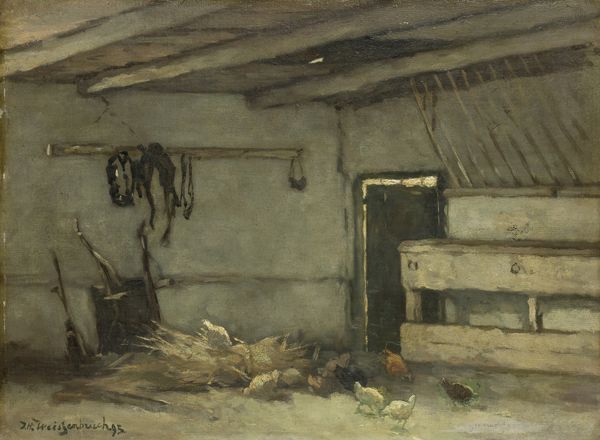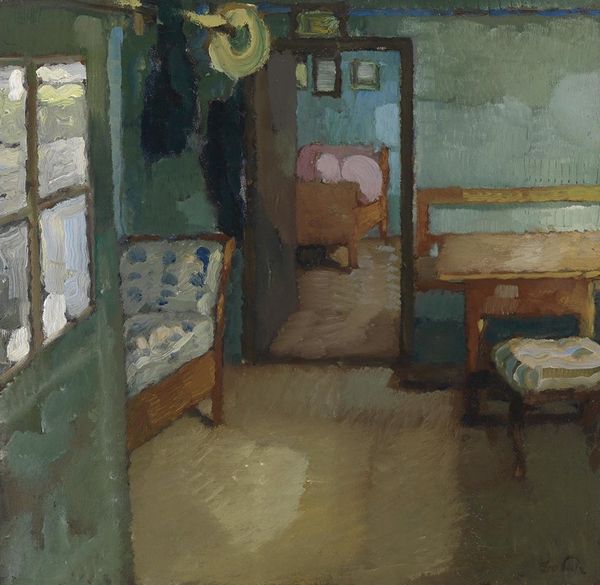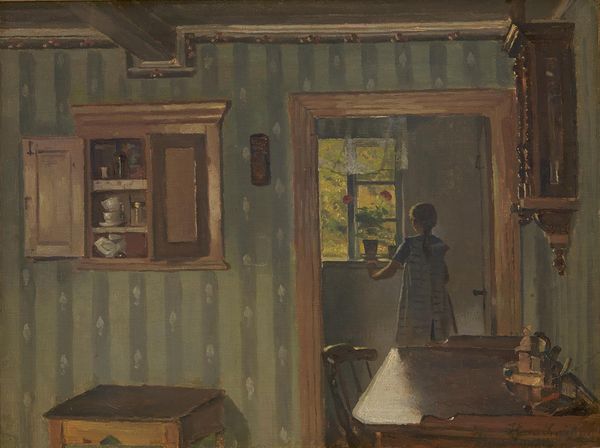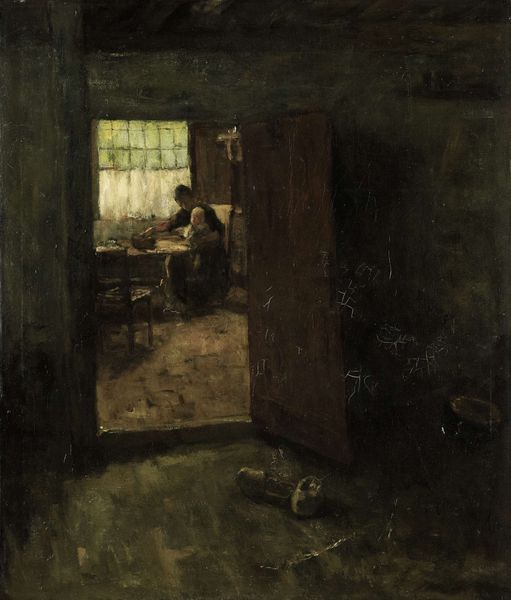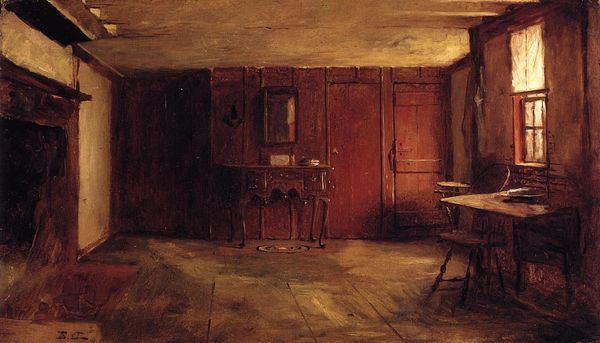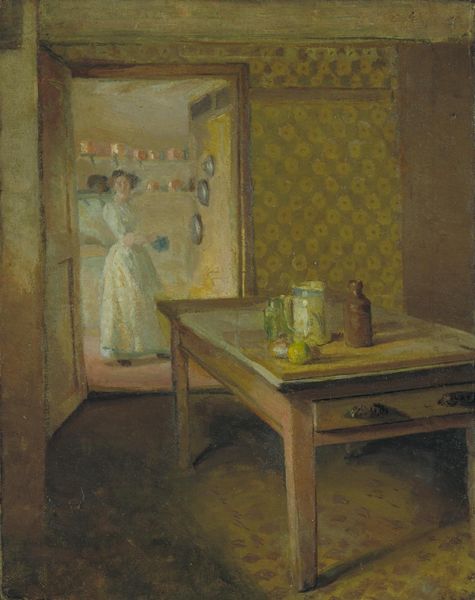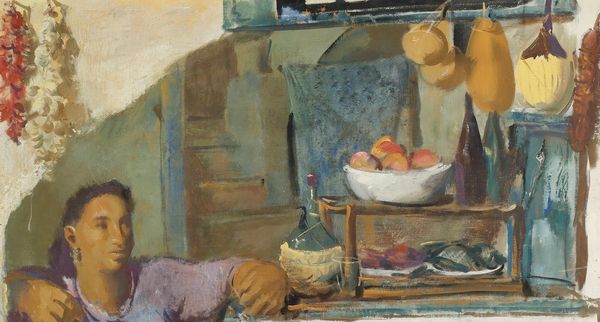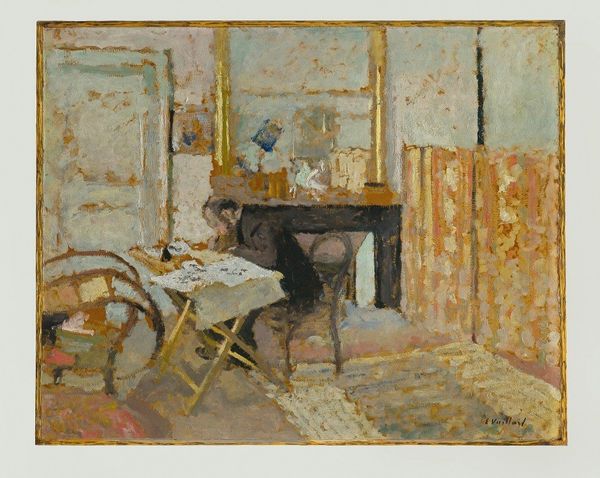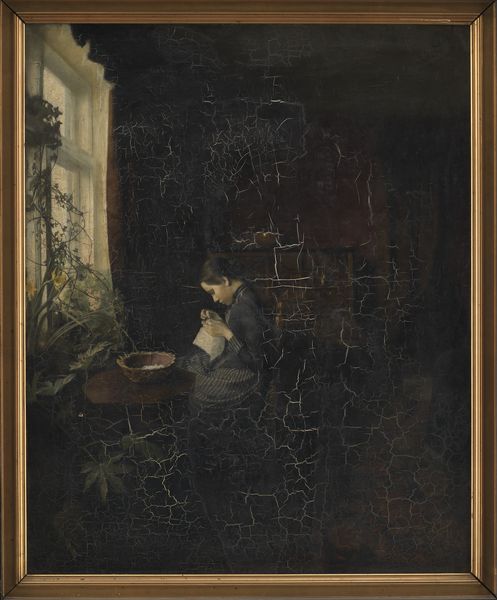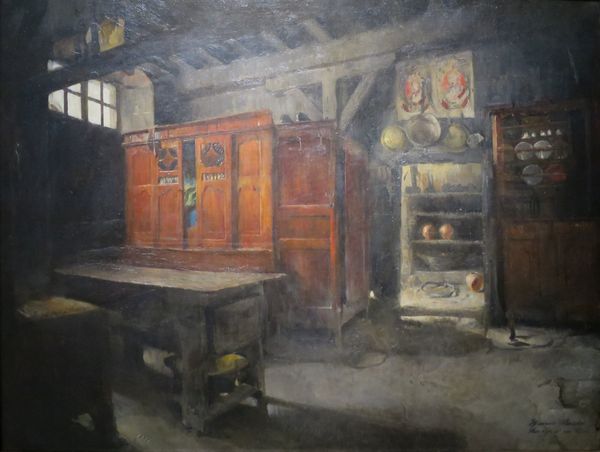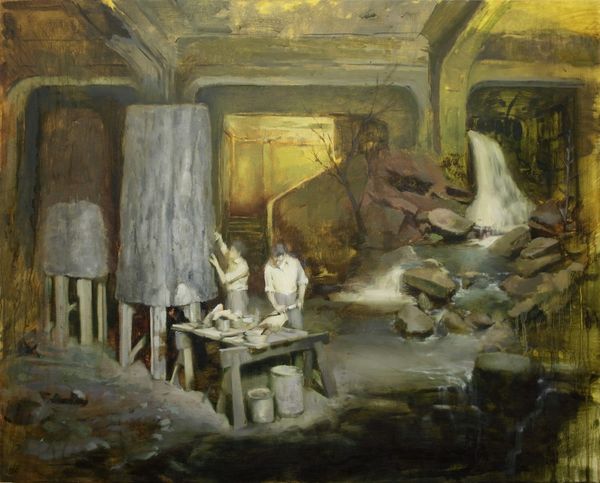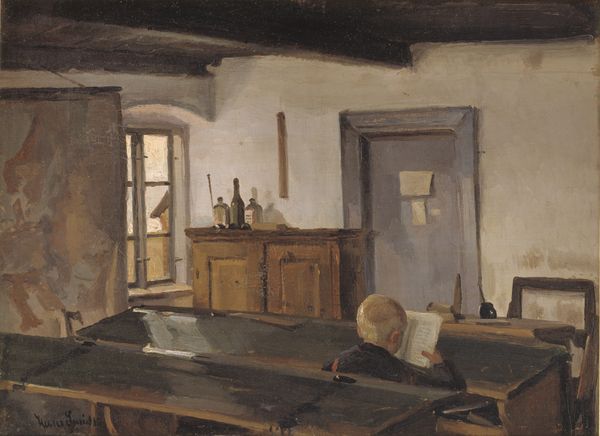
painting, oil-paint
#
dutch-golden-age
#
painting
#
impressionism
#
oil-paint
#
charcoal drawing
#
oil painting
#
genre-painting
Dimensions: height 39 cm, width 51 cm
Copyright: Rijks Museum: Open Domain
Johan Hendrik Weissenbruch painted this view of the cellar of his home in The Hague with oil on canvas, but without dating it. The muted palette and humble subject matter are typical of the Hague School, a group of Dutch Realist painters who sought to capture the everyday lives of ordinary people. Although the image seems straightforward, it creates meaning through the selection of what it represents. The open door invites us into a private domestic space, with a woman standing at the window. Her presence suggests this is a working space, a place of labour rather than leisure. The shelf of tableware and the cooking utensils imply it is a kitchen. But this kitchen does not reflect wealth. The bottles, buckets and barrels suggest it might also be a storage space. In order to understand the painting better, we might want to research the relationship of artists to domestic labour, and the way the working classes were represented in Dutch art of the 19th century. The meaning of this, like all art, is contingent on social and institutional context.
Comments
rijksmuseum about 2 years ago
⋮
On rainy days even a Hague School artist could not work outside. Weissenbruch would then turn to his own house, painting views of the cellar, attic and courtyard. Such paintings allowed him to study the effect of light and the resulting range of colours. A few green cabbage leaves on the tile floor enliven the otherwise subdued palette.
Join the conversation
Join millions of artists and users on Artera today and experience the ultimate creative platform.
